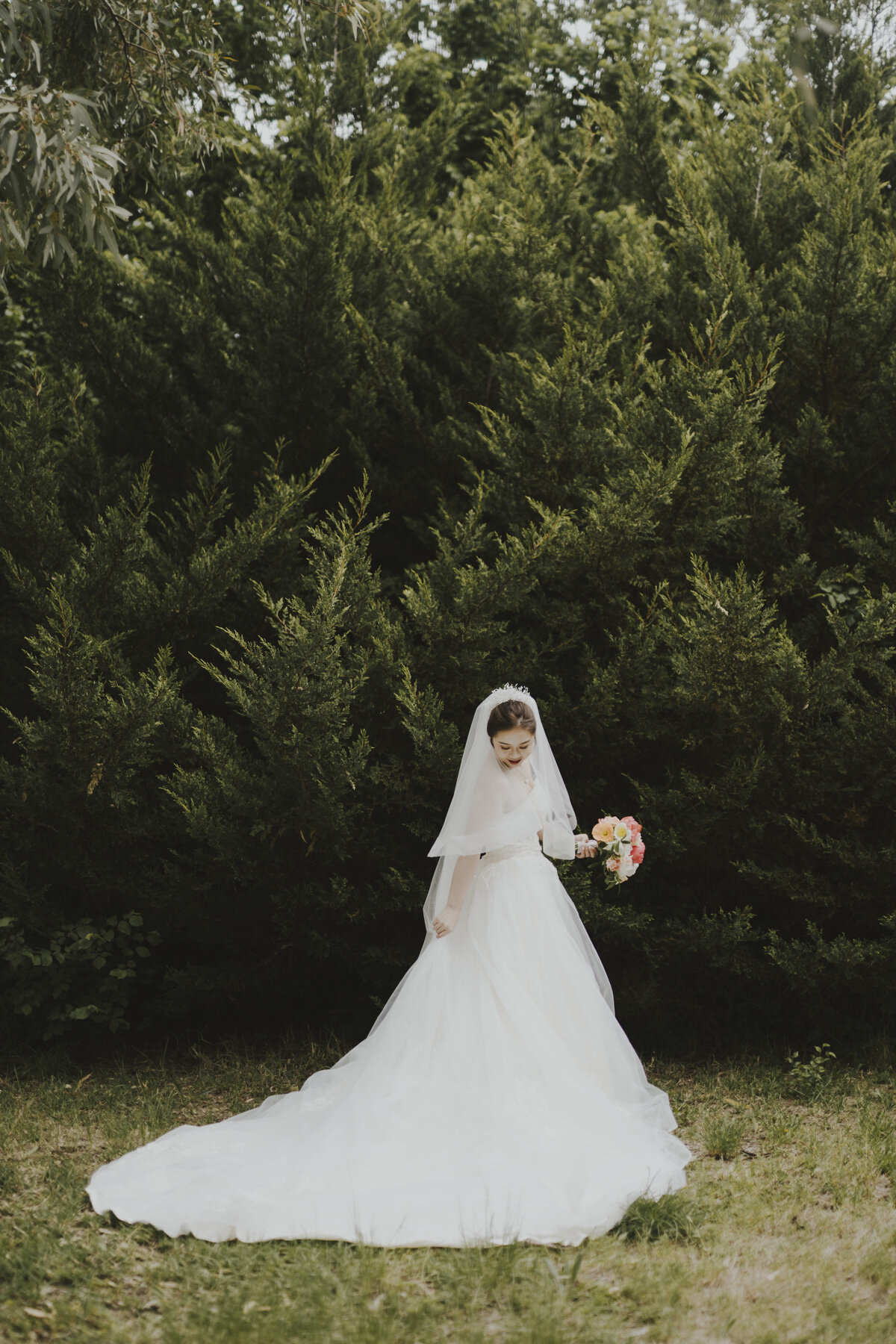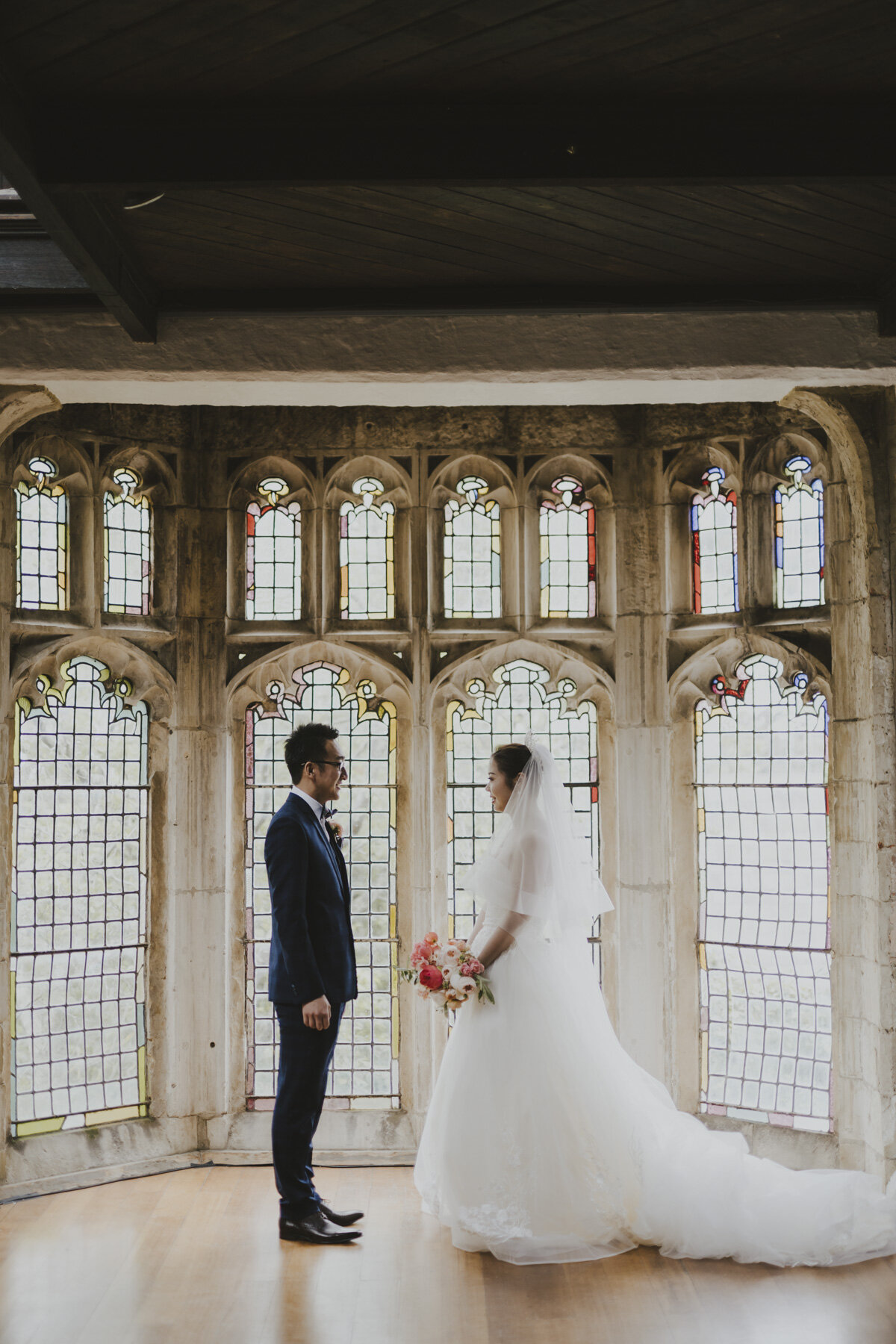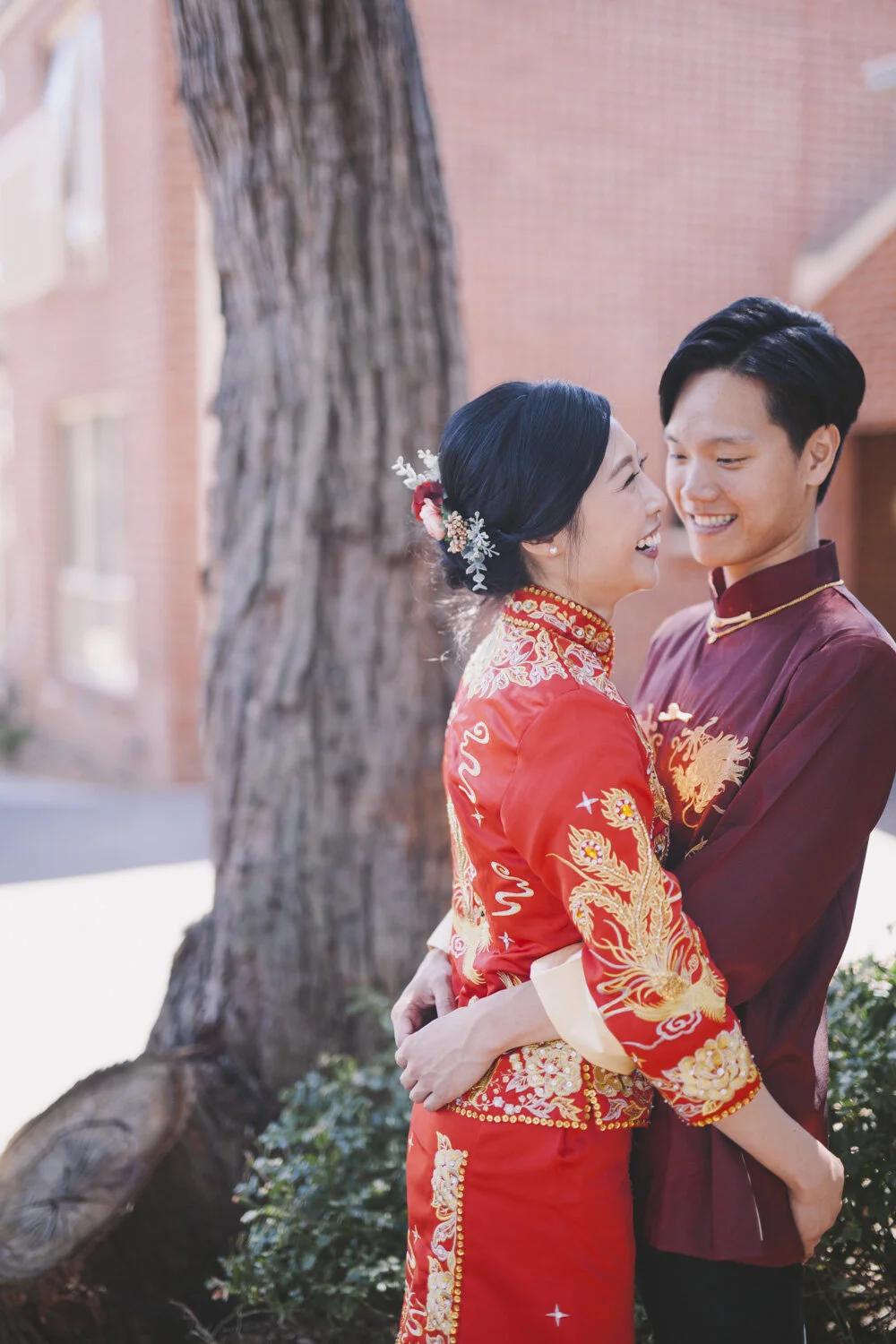Chinese Wedding Photography in Melbourne
What makes a Chinese wedding special?
As a Chinese wedding photographer, we have a unique opportunity to be part of a very special event. Chinese weddings are big, grand events that involve a number of important traditions.
In Chinese wedding photography, it is important to take certain culture elements in consideration, in order to ensure that the couple get the timeless shots they want that will allow them to remember their special day forever.
The Chinese community in Melbourne
Chinese weddings in Melbourne are very popular. This is largely due to the significant Chinese community here. Chinese migrants have been settling in the city since the Victorian gold rush of the 1850s, and today make up a substantial proportion of Melbourne’s population. Since 2001, the number of Chinese-born migrants living in Melbourne has more than doubled.
Much of the Chinese community in Melbourne is centred around the suburb of Box Hill, just east of the CBD. Here, over 60% of residents were either born in China or have Chinese ancestry. This area of the city is vibrant and developing rapidly, thanks perhaps to its large Chinese community.
Chinese weddings in Melbourne
Chinese wedding photography captures many special moments, thanks to the large range of complex traditions involved a Chinese wedding. Red and gold are the traditional colours in a Chinese wedding, and these are featured prominently throughout festivities. These bright, rich tones make for excellent wedding photos!
Chinese weddings differ greatly from Western weddings in that the parents and relatives, especially the elderly, play a very important part in the wedding. This is linked to the strong Chinese culture of respecting the elderly, and means that it is important that these older relatives are captured in the photos.
Chinese wedding days are packed with important events and ceremonies. This means that Chinese couples often like do pre-wedding photos before the wedding, as there may be little time for them to take photos on their actual wedding day.
It is important to understand that Chinese weddings are not just about the couple’s marriage. They are also about the family coming together and celebrating the bride and groom. Equally, the bride and groom use the day to express their gratitude for their parents and relatives for looking after them and bringing them up.
What does a traditional Chinese wedding day look like?
A Chinese wedding day is normally a very long day full of activities, all drawn from treasured traditions. There is also important etiquette that applies to many parts of the day. The day starts very early in the morning, as the bride, groom, and important family members prepare for the day ahead. The bride and groom dress in elaborate traditional dress, although later in the day they may change into modern clothes.
As per tradition, the groom will come to bride's house to pick her up for the ceremonies to follow. This is an important moment that involves a number of traditions in itself. The bridesmaids will try to stop the groom entering the house, playing door games and pretending to block his access. The groom will need to give red envelopes filled with money in order to gain access to the bride.
It is considered very bad luck for the groom to see the bride in her wedding clothes before the nuptials begin, so this will be the first time he sees her in her elaborate red dress. Once the groom has been allowed entry, there will be a formal tea ceremony at the bride's house. This is an important ceremony as it signifies the bride’s parents giving their blessing to the couple. Special moments like these provide excellent opportunities for any Chinese wedding videographer.
Once the tea ceremony is complete, both bride and groom go to the groom's house. Here, there will be another round of tea ceremony, this time with the groom’s parents giving their blessing to the marriage. Most Chinese weddings in Melbourne then have a Western wedding ceremony in the afternoon where the couple officially tie the knot and sign the marriage certificate.
A reception follows afterwards, usually in the evening after the long day of activities are complete. The reception is a fun event, featuring games and festivities. The guests also give the bride and groom money in red envelopes, a cash gift known as li shi in some Chinese dialects, which signify good luck for their marriage. There are certain gifts that are considered bad luck, such as fans, clocks, books, shoes, certain flowers such as daisies and chrysanthemums and anything in a set of four.
Details of Chinese Traditional Wedding Process
In China, the ancients attached great importance to weddings and marriages, and people who paid attention to etiquette attached great importance to them. Although there are a lot of red tape in ancient Chinese weddings, the purpose is to highlight the solemnity and grandness of weddings to emphasize the importance of weddings.
It’s important that the wedding photographers have a good understanding of the traditional process when shooting Chinese weddings as there are so many etiquettes/moments which should not be missed.
Premarital Etiquette(the most important part of wedding at present)
Premarital etiquette includes the above-mentioned "three books and six ceremonies". Although the above-mentioned etiquette is differentiated according to the etiquette system, it runs through the whole premarital etiquette. The actual operation is not complicated and can be roughly divided into the pre-wedding ceremony and the wedding ceremony.
There are five etiquette before the wedding ceremony. The first is “Na cai”. If the man wants to marry the woman, he needs to send a matchmaker to the woman to propose marriage. After receiving the woman's consent, he will ask the matchmaker to formally accept the "gift of choosing"from the woman's family. After preliminary discussions, the woman can formally propose marriage to the woman's family and needs to bring some gifts. The second is “Wen ming”. The man brings gifts to the woman's house to ask her family. The third is “Na ji”. After the man asks for his name and the birth date, he informs the woman of the auspicious omen of the marriage, and presents gifts to show the etiquette needed for the engagement. In Naji, the man needs to give the letter of appointment to the woman's home. The fourth is “Na zheng”. When accepting the bride price, the man needs to send the letter of gift and the bride price to the woman's home. The letter of gift will record a detailed list of the bride price. The fifth is “Qing qi”, which is the date when the man chooses to get married. The birthday of the man and the woman is written on red paper. The matchmaker will send it to the woman's house to discuss the date of marriage with the owner.
When it comes to the wedding day, it is the most solemn time, and it is also on this day that the man needs to hand in the greeting book to the woman's home, and there will be a lot of procedures on that day.
- Ancestor worship: before the bridegroom goes out to mary the bride, he first worships his ancestors.
- Departure: the bridegroom needs to take the wedding team to the bride's home to pick up the bride. The wedding team is good at even numbers, which means that good things are in pairs (of course, in many places in the whole wedding process, double numbers are needed).
- Fireworks: Firecrackers should be set off on the way to the bride's house to celebrate the wedding (ancient bridegroom's procession would beat drums and gongs along the way).
- Waiting: When the groom arrives at the woman's house,a boy will wait for the groom with a tea tray. After the groom gets off the bus, he should give the boy a red envelope in return and then enter the woman's house.
- Pleasing: The groom should hold a bouquet of flowers for the bride to be married in the room. At this time, the bride's best friend should stop the groom and the groom should only enter after he has agreed to the conditions proposed by the woman.(It is generally said that the more obstacles from the bride's family, the more precious the bride will be to the groom in future days).
- Farewell: When the new couple worship their ancestors with incense, the bride should worship her parents, say goodbye to them, and the father should cover the bride's veil. The groom only needs to bow to them.
- Going out: The bride should be escorted to the limousine by female elders with bamboo screens or red umbrellas, because the bride's position on the wedding day is higher than anyone else's, but she cannot compete with the sky.
- getting on the limousine: after the bride got on the limousine, the woman' parents sprinkled a bowl of clear water and white rice behind the limousine, representing that the daughter had spilled water. they will not ask about anything else in the future and wish her success in everything and food and clothing.
- Firecrackers: On the way from the woman's home to the man's home.fireworks are also set off all the way.
- Touching Orange: When the bride's welcoming team arrived at the groom's house,a child carrying orange greeted the bride. The bride will touch the orange and give a red envelope in return. The two oranges are to be put in the evening and let the bride peel them herself, which means "longevity".
- Leading New. When the bride walks out of the limousine,a blessed elder of the man should hold a bamboo screen on the bride's head and help the bride enter the hall. When entering the door, the bride should never step on thethreshold, but should cross over.
- Across the fire basin: the bride should cross over from the charcoal basin before entering the door, which means to eliminate the misfortune and inauspicious before entering the door.
- Worship heaven and earth: in the hall of the bridegroom's house, facing the parents and ancestors of the bridegroom, the bridegroom and the bride need to worship the heaven, the earth and the parents together under the host of the master. The bride will offer tea to the parents of the bridegroom and change their names. The parents of the bridegroom should each give the bride a red packet of changed name. After the ceremony is completed, the bride will be sent to the wedding room.
- Wedding banquet: entertain guests and hold ceremony at the same time. At the wedding banquet, the bride and groom toasted each table one by one.
- Farewell: After the reception, the newcomer stands at the door to see off the guests.
Marital Etiquette
In the traditional wedding ceremony in ancient China, after seeing off relatives and friends, the wedding ceremony was presided over by the matchmaker for the new couple in the wedding room, a small table of wine and meat were placed in the wedding room to meet the etiquette needs.
The first is the etiquette of washing hands, which requires the newcomers to wash their hands and face with gourd-shaped water ladle in the basin before entering the banquet, preferably with copper fittings. The second is the etiquette of eating together. Husband and wife sit opposite each other. Waiters each take a piece of meat into the bowl of the couple. After saluting each other.they eat, indicating the beginning of a common life. Next step, the etiquette ofdrinking is that the bride and groom hold the glass and drink with their arms crossed. After drinking, they tie the glass with red thread, indicating that the couple will never separate. The fourth is the etiquette of hair binding, which requires the groom and the bride to cut off a little of each other's hair and tie it into a "bun", put it into a brocade bag, and hand it over to the bride to keep it. It means that they will always be together. In the end, the bride and groom bowed to each other, then went to bed, the man left and the woman right, and the matchmaker started throwing money at them to show that they would live a long and prosperous life in the future and announce the end of the wedding.
In the modern Chinese wedding ceremony, there have been great changes in the ceremony. For example, the etiquette of eating and drinking has been cancelled. Or it may be slightly changed, for example, only the hair needs to be put into the brocade bag for the hair knot ceremony. Or turn into a noisy in the wedding room. After the wedding banquet, the groom's friends and young relatives add a lively and festive atmosphere to the bridal chamber to make a good start to the wedding life.
Post-marital Etiquette
After marriage etiquette is that the new couple should show respect for their elders. On the second day of the wedding, the bride's first job is to enter the kitchen and start cooking to honor her husband's parents. After breakfast, the groom brings gifts to accompany the bride back to her original home to visit the bride's parents, which is also called "Hui men".
Every link of the Chinese wedding ceremony has a specific meaning and contains the spiritual sustenance of the Chinese people. Although there are still many details not shown in the introduction, our understanding of Chinese wedding is very in-depth and professional. We will do our best to offer the most unforgettable wedding photos to every couple who wishes to hold a Chinese wedding, and send our best wishes with the most sincere service!
Now taking bookings for 2020 and 2021.
Please contact us for packages / prices or to set up an appointment.
We’d love to meet you and can’t wait to help document your love story. We look forward to hearing from you.
Email: info@lavanphoto.com.au













